|
Réponse |
Message 1 de 65 de ce thème |
|
1398 Scot's Discovery of USA
|
 |
| THE WESTFORD KNIGHT/SINCLAIRS
 Ninety years before Christopher Columbus "discovered" America, a Scottish Knight and an Italian Navigator explored North America with a small fleet of 12 ships. The Knight was Prince Henry Sinclair and Nicolo Zeno was the Navigator. A carving on a rock in the centre of Westford, Mass. gives us important evidence of their remarkable exploration of the New World. Ninety years before Christopher Columbus "discovered" America, a Scottish Knight and an Italian Navigator explored North America with a small fleet of 12 ships. The Knight was Prince Henry Sinclair and Nicolo Zeno was the Navigator. A carving on a rock in the centre of Westford, Mass. gives us important evidence of their remarkable exploration of the New World.
Prince Henry's expedition at the time was thought to be insane.The general perception was that the Earth was flat and a fearful journey to the unchartered horizon meant a one way ticket to certain death. No one had ever returned from a journey across the Atlantic Ocean, intense speculation led to the conclusion that there must be a cliff-hanger fall off into the abyss.
Prince Henry's knowledge and ingenious intellectual skills, were greatly assisted by access to archaic maps and documents, found in Jerusalem and taken from the Holy Land to Roslin Castle by his direct relations who served their military missions under the banner of the red cross, esteemed as the Knights Templar.
The family's regard for these prized manuscripts was put into context, when, in 1447, as a ravaging fire overwhelmed the castle, the Prince's Grandson, William Sinclair, now in charge of the Sinclair's heritable property, did not oversee the safe evacuation of the woman and children, no....in his opinion there were more important issues to deal with, his ancestor's three vintage treasure chests were carefully secured and lowered to safety from the burning building.
 This encounter with destiny, was to leave an everlasting impression on William Sinclair. Sir William, the chapel builder, is also the direct ancestor of the First Grand Master Mason of Scotland, also named William St Clair (Sinclair) who had a exulting sense of pride when he inherited the title. An akashic oracular time machine centred on the Sun and the Moon would be built to house the ancient library of knowledge. A modern day Solomon's Temple (itself an anagram of Sol-Sun & Mon-Moon). The source of Modern Freemasonry was to leave some figurative allegories to symbolise deeper moral truths, or spiritual meanings. Bloodlines and the inseparable D.N.A. coil symbol that today is considered conventional to portray the blood-group message, was ascribed by Sir William to pay attention in chapter 13 verse 13 to the knowledge and secrets of the 13th disciple.... Matthew's words,...... This encounter with destiny, was to leave an everlasting impression on William Sinclair. Sir William, the chapel builder, is also the direct ancestor of the First Grand Master Mason of Scotland, also named William St Clair (Sinclair) who had a exulting sense of pride when he inherited the title. An akashic oracular time machine centred on the Sun and the Moon would be built to house the ancient library of knowledge. A modern day Solomon's Temple (itself an anagram of Sol-Sun & Mon-Moon). The source of Modern Freemasonry was to leave some figurative allegories to symbolise deeper moral truths, or spiritual meanings. Bloodlines and the inseparable D.N.A. coil symbol that today is considered conventional to portray the blood-group message, was ascribed by Sir William to pay attention in chapter 13 verse 13 to the knowledge and secrets of the 13th disciple.... Matthew's words,......
"Though seeing, they do not see;
though hearing, they do not hear or understand....."
Matthew's name in Hebrew means "Gift from God". In turn the adept Sir William named Rosslyn Chapel in commemoration and respect to Matthew and it was constituted and christened as the "Collegiate Church of St Matthew". Mathew's veneration, integrity and understanding is clearly brought out in the adrenalated sculptural form of the Master Mason's Pillar. The pillar is also referred to as the "Princes Pillar" in "An Account of the Chapel of Roslin (1778)." On the architrave adjoining the pillar, there is the inscription Forte est vinum fortior est rex fortiores sunt mulieres super omnia vincit veritas: "Wine is strong, a king is stronger, women are stronger still, but TRUTH conquers all" (1 Esdras, chapters 3 & 4)


Prompted by divine influence and inspired by ancient scriptures, William's covenant was to include all aspects of the same in his masterpiece, his roof design is an awe inspiring vaulted, treasure-chest roof-lid that has 215 stars and flowers skilfully sculptured into the ceiling. If we consider the half barrel roof as representational of 1/12 or 2160 years indicating the transition from one zodiacal symbol to the next in the precession of the equinoxes 2160 year period on our orbit round the 25920 years great zodiac precession. First detected by the Greek astronomer Hipparchus in about 130BC from the apparent increase in the observed celestial longitudes of stars. It amounts to about 50″.3 per year. Hence the equinoxes move westwards on the celestial sphere by 1 ° in about 72 years, when we calculate the full circle by multiplying 72 x 360 degrees it = 25920 which in turn takes 25 920 years to complete one circuit.


The great masonic seal, as seen on the dollar, with the all seeing eye on top of the truncated pyramid has 72 blocks which represents the degrees of perceived time, in the great precession of the equinoxes.
The Westford Carving provides one of the sparse bits of evidence of Prince Henry's exploration of America. Other testimony includes the Zeno Maps, the narrative written by Zeno, the Micmac legends, and the unique cannon found in Guysborough Harbour.
Further proof of a North American visit can be found in the stone carvings in Roslin Chapel. Representations of native American maize plants ornament the M curved arches, while other carvings include the healing aloe cactus.
Henry Sinclair was born and raised at Roslin Castle. His father was William Sinclair who died in Lithuania, on crusade with the Teutonic Knights. At the age of 24 Henry became the Earl of Orkney, an earldom which extended throughout the islands of Orkney and included Caithness. Coincidentally Orkney is the most northerly point of the Scottish Roseline. By the time he was 35 he had built a fleet larger than Norway's entire navy. As navigators he was fortunate to obtain the services of Antonio and Nicola Zeno whose father was Admiral Carlo 'The Lion' of Venice, famed for saving that Italian City. Setting out from Orkney with a fleet of 13 vessels and 100 men, they followed Zeno's map across the sea to Newfoundland and Nova Scotia. Theirs was a voyage of exploration and settlement. They weren't conquistadores as were many other explorers. Instead, they were welcomed by the Micmac Native Americans. During a winter season they lived peaceably among the Micmac Indians before Zeno returned to Orkney, while Sinclair explored further southward, along the Massachusetts coastline.

Pictured above is the Micmac River where the fleet sailed in and met the Native Americans.
Seeing smoke rising, a group of the explorers marched inland to Prospect Hill to get a better view. Along the way, Sir James Gunn, Sinclair's lifelong friend, died. In his memory, they carved his effigy in a rock ledge. It consisted of many punched holes, outlining the dead Knight. Archaeological experts have confirmed that the holes were punched 600 years ago! The effigy contains elements known only at that time to Northern Europeans. The sword and the shield trace solely to Prince Henry Sinclair and the Gunn Family.


HISTORY OF THE WESTFORD CARVING
1883
The "History of the Town of Westford" by Rev. R Hodgman, published in 1883, describes the presence of markings on the ledge. It is said the rude outlines of the human face have been traced upon it, and the figure is said to be the work of Indians."
1940
Willaim B Goodwin, an insurance executive who was obsessed with his interest in archaeology, and Malcolm Pearson, photographer, published a description of the carvings.
1950
Frank Glynn, president of the Connecticut Archaeology Society, thought the sword was of viking origin. T.C Lethbridge, curator of the University Museum of Archaeology and Ethnology in England, identified the sword as "a large, hand-and-a-half wheel pommel sword of the fourteenth century type." Further he suggested that the arms armour and heraldic emblems were a kin to the first Sinclair Earl of Orkney.
1974
Frederick J. Pohl, student of pre-columbian exploration and writer, made a thorough study of life and travels of the Earl of Orkney, including the carving. He published his findings in "Prince Henry Sinclair, his Expedition to the new World in 1398."
1970's
Allister MacDougall, the Town Historian of Westford, erected a granite monument beside the carving.
1990
Marianna Lines, under contract of Niven Sinclair, made a cloth rubbing of the Westford Knight Carving which revealed more detail than previously seen.
  
Pictured above is a tribute to The Westford Knight; which can be found in Westford,
THE EPIGRAPHIC TOMB STONE reads
PRINCE HENRY FIRST SINCLAIR OF ORKNEY BORN IN SCOTLAND MADE A VOYAGE OF DISCOVERY TO NORTH AMERICA IN 1398 AFTER WINTERING IN NOVA SCOTIA HE SAILED TO MASSACHUSETTS AND ON AN INLAND EXPEDITION IN 1399 TO PROSPECT HILL TO VIEW THE SURROUNDING COUNTRYSIDE ONE OF THE PARTY DIED. THE PUNCH-HOLE ARMORIAL EFFIGY WHICH ADORNS THIS LEDGE IS A MEMORIAL TO THIS KNIGHT.
Effigy knight below.
|
|
|
|
|
Réponse |
Message 6 de 65 de ce thème |
|
 the design and do I see a pine cone like fleur de lis the Meandros design exists in another place at Rennes it is on the floor on the gates where John the Baptist and Jesus statues are and the gate in front of the altar on the pulpit up in the ceiling of the pulpit is the Seal of Solomon The stars on the ceiling representing the heavens is the pentacle there is the Cross Crosslet on the wall paper  The Cross Crosslet is the Consecration stone design at Rosslyn Chapel the picture of it is on page 69 of Turnbull they were carefully anointed with special oils for the consecration it dates back to the 1440's http://upload.wikimedia.org/wikipedia/commons/f/f5/Altar_Rennes-le-Chateau.jpgAt Garway Temple Church the Cross Crosslet is in stone there http://www.britainexpress.com/counties/hereford/churches/Garway/Garway-8139.htmhttp://www.britainexpress.com/counties/hereford/churches/Garway.htmAn intriguing 13th century church on a rectangular plan, created from an earlier 12th century round church built by the Knights Templar. St Michael, Garway, is composed of a nave, chancel, and south chapel, joined to a detatched 70 foot high tower by a 17th century passage. The chancel arch of the round Templar church was used as the chancel arch for the 13th century building. The rounded foundations of the earlier Templar church were uncovered by excavations in the 20th century, and can be viewed to the north of the current nave. The Templars built their churches on a circular foundation, in emulation of the Temple of Solomon (Al Aqsa Mosque) in Jerusalem. Garway is the only visible circular nave remaining in England. At the time of its foundation Garway was the most powerful Templar church in the Welsh Marches. The exterior walls of the nave and chancel are notably for an intriguing collection of mason's marks, including a Maltese cross, a swaztika, the Lamb of God, a Patriarchal Cross, Cross Fourchee, a winged dragon, and a Dextra Del, or Hand of God, emerging from a cloud. The most strioking aspect of the interior is the chancel arch. This is of three orders. The outer order is the traditional Norman chevron, the inner made with surprisingly Moorish-style voussoirs (wedge-shaped stones). This Oriental style design was a result of the Templar contact with Eastern design and architectural style in the Holy Land. It has the green man like Rosslyn and the Winged serpent like Rosslyn An arcade of two bays leads to the chancel, where a 13th century piscina is set into the wall. The head of the piscina has been carved with an intriguing set of markings, including a fish and snake (or eel) flanking a chalice and wafer symbol. A similar serpent symbol is cut into one side of the simple octangonal font. The serpent in common medieval Christian use was a negative symbol, but in this context it is probably used as a positive symbol; in the Far East the serpent was a symbol of healing, and its use here may relate to the Templar dedication to healing.http://www.britainexpress.com/counties/hereford/churches/Garway/index.htm?page=2The Markings on the wall are amazing ....the winged serpent looks like a symbol the Templars used The Dragon imagery is especially important to England and Wales and the Merlin story |
|
|
|
Réponse |
Message 7 de 65 de ce thème |
|
The Franciscan church is attached to the Church of the Holy Sepulchre by the Magdalene chapelOne of the most holiest churches, located in Jerusalem at the traditional site of Golgotha - the place of Jesus Crucifixion and burial. Matthew 27: 33, 60: "And when they were come unto a place called Golgotha....And laid it in his own new tomb, which he had hewn out in the rock: and he rolled a great stone to the door of the sepulchre, and departed"http://www.biblewalks.com/Sites/Sepulcher.html#MagdaleneOn the floor, in front of the Holy Sepulchre, is a mosaic figure of a double headed eagle - symbol of the Byzantine empire and the Greek Orthodox church.that is also the symbol used by 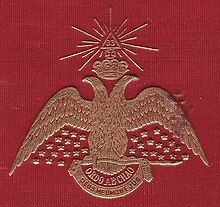 Morals and Dogma by Pike and the Scottish Rites The first mention of a double-headed eagle in the West dates from 1250, in a roll of arms of Matthew of Paris for Emperor Frederick II of the Holy Roman Empire. Usually depicted black on a gold background, it replaced the earlier single-headed eagle, and was subsequently adopted in the coats of arms of many German cities and aristocratic families. After the dissolution of the Holy Roman Empire in 1806, the double-headed eagle was retained by the Austrian Empire, and served also as the coat of arms of the German Confederation. The double-headed eagle was part of the emblem of the Order of the Solar Temple. This cult was started by Joseph Di Mambro and Luc Jouret in 1984 in Geneva. It gained notoriety in 1994 when members of the cult committed mass suicide and murders in two villages in Switzerland, followed in 1997 by suicide/murders in Canada. http://en.wikipedia.org/wiki/Double-headed_eagleThe Greek Orthodox chapel has a circle floor with a sun and wavy rays coming from itthere is a rock there which the crack goes down to the chapel of Adam belowit is said that Jesus blood dripped down to reach the skull of AdamMagdalen's star has points and a green stone center http://www.sacred-destinations.com/israel/jerusalem-holy-sepulchre-photos/slides/franciscan-mass-cc-irithThe Franciscans he impact of the Franciscan Third Order Secular upon the feudal society of medieval Europe has been held to be considerable. Among its ways of impacting that era was the prohibition on the brothers of the Order from bearing arms. This stance of pacifism in a society with frequent feuds and wars was upheld by the authority of the Church, and limited the ability of the nobility and towns to demand that all men be subject to serving in battle. Also, the admission to the Order of members from all stations in life on an equal basis was a mechanism for promoting social change in a period of rigid social stratification. The Third Order has known many notables among its members. Outstanding among them is Saint Elisabeth of Hungary, though it is not established to all that she ever formally joined;[3] she is, however, Patroness of the Order. Additionally, she is traditionally paired with St. Louis, King of France, declared Patron of the Order. Among other notable figures were: St. Ferdinand, King of Castile; St. Elizabeth of Portugal, grand-niece of the first St. Elizabeth; St. Rosa of Viterbo; St. Margaret of Cortona; St. Thomas More; Blessed Umiliana Cerchi; Blessed Angela of Foligno; St. Ivo of Kermartin; Saint John Vianney, the famed Curé of Ars, France. Of names celebrated in history for literature, arts, politics, inventions, etc., Blessed Raymond Lull; Dante, Giotto, Petrarch, Cola di Rienzo, Christopher Columbus, Vasco da Gama, Cervantes, Lope de Vega, Galvani, Alessandro Volta, Garcia Moreno, Franz Liszt, and Lady Georgiana Fullerton. Popes Pius IX and Leo XIII were members of the Third Order, as also were Pope St. Pius X and the Blessed Pope John XXIII The Third Order of Saint Francis Canada The Third Order of St. Francis was established by the Friars Minor Recollects at Quebec in 1671, and some years later at Three Rivers and Montreal. Considering the sparse population of the country, it was in a flourishing condition. In 1681 a Recollect notes that "many pious people of Quebec belong to the Third Order". After the cession of Canada to England, the Third Order, deprived of its directors, the Recollect Franciscan friars, seemed to have disappeared gradually, only to flourish anew thirty years after the death at Montreal in 1813 of the last Recollect friar. The Third Order was re-established about 1840 by Mgr. Ignatius Bourget, Bishop of Montreal. Fervent fellow-labourers helped the holy prelate to spread the Third Order in Montreal, notably Canon J.A. Paré and the Sulpicians C. E. Gilbert and A. Giband. Mgr. Bourget established a fraternity of women, 6 May 1863, and one of men, 13 June 1866; both were directed by the Sulpicians till 1874, by Canon P. E. Dufresne from 1874 till 1881, by the Jesuits from 1881 till 1888, and by the Sulpicians from 1888 till 1890; since then by the Friars Minor. Mgr. Fabre, successor to Bishop Bourget, in a letter (3 September 1882) to the priests and faithful of his diocese, says: "We have in our midst the tertiaries of St. Francis, who are known to you all by the edification they give, and by the good odour of all the virtues which they practise in the world." The Third Order was reintroduced at Quebec almost at the same time as at Montreal. On 19 November 1859, Father Flavian Durocher, O.M.I., received the profession of two women, after a year's novitiate. These were joined by others, until in 1876 Quebec City alone possessed over 200 tertiaries, while in the Province of Quebec several parishes had groups of tertiaries. Saint Francis of Assisi rejected the urban materialism of his parents and local church. He established a mendicant, or beggar, lifestyle for the followers of his church-approved order—Franciscan friars for men and the Poor Clares for women. Many religious thinkers in the 1200s were influenced by the earlier philosophy of Christian Neoplatonism, a synthesis of Plato’s ideals and Christian mysticism. Under that influence, they rejected the Aristotelian focus on rationalizing religion and believed God's divine revelation could best be understood through experience. The Cistercian Bernard of Clairvaux, who died in 1153, feared that Abelard's scholastic logic would deaden true spiritual understanding. Later, Bonaventure, a Franciscan who lived from 1221 to 1274, developed a mystical philosophy guiding Christians toward contemplation of the ideal realm of God. http://history-world.org/dynamic_culture_of_medieval_euro.htmAlexander of Hales, Bonaventure, and John Duns Scotus, the "Doctor of Wonders" Roger Bacon, and the well-known mystic authors and popular preachers David of Augsburg and Berthold of Regensburg. as well as Anthony of Padua
|
|
|
|
Réponse |
Message 8 de 65 de ce thème |
|
|
|
|
Réponse |
Message 9 de 65 de ce thème |
|
|
|
|
Réponse |
Message 10 de 65 de ce thème |
|
Does Anybody know what this is on the Tour de Magdela http://www.flickr.com/photos/9484963@N03/5141839522/When you go up the spiral steps and open the door for the view there looks to be a pillar of sorts with a triangle on top and the Trinity or triquetra the three goddesses... or Father Son and Holy Ghost The triquetra is often found in Insular art, most notably metal work and in illuminated manuscripts like the Book of Kells The windows have the three leaf clover clover is one of the main nectar sources for honeybees. It makes sense there is a triangle connected to the shamrock or clover it is three in one The Druids and Pagans used the shamrock as well the fleur de lis with France It is very Celtic This symbol is on the roof top of Roslyn Chapel there is a pillar or steeple with a pointed top on the roof of Rosslyn Chapel ...it reflects the clubs in the deck of card the number three I wrote an article on what I found on the roof tops of Rosslyn this structure at the Tour of Magdala has windows with the clover/clubsymbol The Clubs have aconnection to the fleur de lis which is a major symbol for the Acadians also with the French Clovis the Merovingian took it as his symbol Clover...Clovis
_________________
Everything is Connected and there are no
coincidences
|
|
|
|
Réponse |
Message 11 de 65 de ce thème |
|
Oh Awesome view Davinho!
BULLDOGNIC wrote:
Quote:
So is the answer yes Nic
The Trefoil points to Pech Cardou?
Just one of many other things that point to Cardou
Erm, No, I would say that it just happens to be on the same rough N/S/E/W position of the Tour Magdala that Cardou is also on. Someone would have to go and check if there is a direct viewpoint, but I doubt it. About the use of fires on hills for communication, they are commonplace in the UK. I actually live just down the hill from one such beacon which were placed in Elizabethan times to warn of the Spanish Armada and re-used in later wars. Last time my local one was lit was for the Millennium and the Queens Golden Jubilee in 2002. Regards Nic
Nic thanks for your infinite patience with me and everybody else You have to think the churches may have communicated through the fires in the old days Why I'm confused is the last sentence in this article http://www.rlcresearch.com/2008/08/30/tour-magdala/He says that through the trefoil you see the peak of Cardou and did he misspell it So Davinho if you have time next month take a peak at the peak and let's see if the article is correct The other interesting part of the trefoil would be the SUN Does the Sun set and does a light sign through it? Where does it go? Or is it a sun rise? The Interesting thing is the trefoil is called the clubs in playing cards [imghttp://upload.wikimedia.org/wikipedia/en/e/ee/Medieval_Gambling_Cards_c._1377.jpg][/img] Now this is interesting The trèfle (club) was probably derived from the acorn The cards had names if we go with the clubs the King of Clubs was Alexander the Great The Queen of clubs which would fit being on top of the Tower of Magdala Argine (possibly an anagram of regina, which is Latin for queen, or perhaps Argea, wife of Polybus and mother of Argus) Here is the beautiful tale of Argea [bThe Seven Against Thebes set out to battle against the army of Thebes headed by Eteocles. Polynices and Eteocles killed each other in a fight among themselves in the ensuing battle. Argia set out with others to find her beloved husband among the many lying rotting in the battlefield, in spite of a decree by King Creon forbidding such, on pain of capital punishment. She searched until she found him. Argia tried to revive him with kisses and tears, however all her efforts were in vain. She then had his body cremated and placed the ashes in an urn. Her virtuous acts showed the genuine love she had for her husband.[/b] Magdalene tears and looking for Christ and her carrying the urn Similar story Sauniere considered her a Queen and he built her a castle A small connection to Rosslyn Chapel...a coincidence On the roof of Tour of Magdala at Rennes Chateau is the Trefoil or in playing cards the CLUB On the roof of Roslyn chapel where the steeples are is one steeple filled with CLUBS (Trefoil) Thing is that on the steeples at Roslyn is all the symbols of the four suits Diamonds Hearts and Spades I call it the House of Chance or House of Destiny I took the picture of the steeple at Roslyn [imghttp://www.ufodigest.com/sites/default/files/Rossalyn%20Chapel_0114.jpg][/img] Argea is the Queen of clubs but then Magdalene could represent the Queen of Clubs as well as Isis |
|
|
|
Réponse |
Message 12 de 65 de ce thème |
|
|
DAVINCI/DAVID
A/ESPADA/BLADE/SIMBOLO FALICO
V/CALIZ/CHALICE/RECIPIENTE/SIMBOLO FEMENINO
ESTRELLA DE DAVID ES LA ALQUIMIA, OSEA LA UNION ENTRE EL HOMBRE Y LA MUJER
|
|
|
|
Réponse |
Message 13 de 65 de ce thème |
|
well the story or myth or legend of the Crusaders took part in the rituals of Freemasonry In 1779 the High Knights Templar of Ireland Lodge, Kilwinning, obtained a charter from Lodge Mother Kilwinning in Scotland. This lodge now began to grant dispensations to other lodges to confer the Knights Templar Degree. Some time around 1790 the Early Grand Encampment of Ireland was formed, which began to warrant Templar Lodges, and evolved into the Supreme Grand Encampment in 1836.[7] The Early Grand Encampment chartered several Scottish "encampments" one of which, having been chartered in 1805 as the "Edinburgh Encampment No. 31", then became the"Grand Assembly of Knights Templar in Edinburgh". who then sought a charter from the Duke of Kent, Grand Master of the Order in England.[8] It seems that the Templar degree had filtered into the lodges of the Antients from Ireland about 1780, and was recorded at York about the same time.[9] Knights Templar can exist either as part of the York Rite or as an independent organization. Though the York Rite and the independent versions share many similarities there are key differences which are described below.   Its a story that had influence on certain parts of freemasonry |
|
|
|
Réponse |
Message 14 de 65 de ce thème |
|
oh FMH very interesting So are we talking about the Roseline Did You ever read that I found a compass like structure at Rosslyn Chapel? You see it from the outside up at the roof 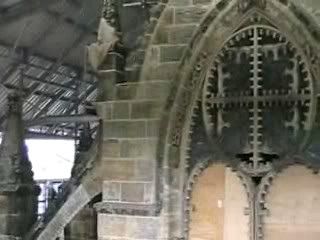 so I can see the importance of the four markers and four angels and the compass With these signs you will vanquish him It is the circle or the square or both at Rosslyn they circled the square which a compass does |
|
|
|
Réponse |
Message 15 de 65 de ce thème |
|
 |
Click para ampliar |
 St Martin of Tours feast 11/11 or Roman 9/11 November (i/noʊˈvɛmbər/ noh-vem-bər) is the eleventh month of the year in the Julian and Gregorian Calendars and one of four months with the length of 30 days. November was the ninth month of the ancient Roman calendar. November retained its name (from the Latin novem meaning "nine") when January and February were added to the Roman calendar. Encyclopædia Britannica Eleventh Edition - Wikipedia, the free encyclopediaThe Encyclopædia Britannica Eleventh Edition (1910–1911) is a 29-volume reference work, an edition of the Encyclopædia Britannica. It was developed during the encyclopaedia's transition from a British to an American publication. Some of its articles were written by the best-known scholars of the time |
|
|
|
Réponse |
Message 16 de 65 de ce thème |
|
Pech Cardo-u Cardo Spanish Thistle In occitan (langue d’oc language) Cardou means chardons - thistle  Nova Scotia crest - Louvian  Purple rain Latin cardo means pivot, the axis of the card-inal points, the galactic center. http://en.wikipedia.org/wiki/CardoThe cardo was a north–south-oriented street in Roman cities, military camps, and coloniae. The cardo, an integral component of city planning, was lined with shops and vendors, and served as a hub of economic life. The main cardo was called cardo maximus. Order of the Thistle http://en.wikipedia.org/wiki/Order_of_the_Thistle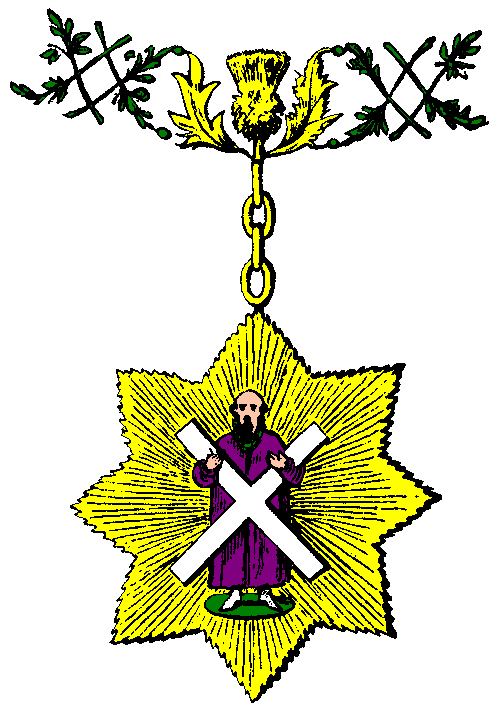 http://freemasonry.bcy.ca/images_downlo ... histle.gif http://freemasonry.bcy.ca/images_downlo ... histle.gif http://www.popsugar.com/Kate-Middleton- ... e-23859497 http://www.popsugar.com/Kate-Middleton- ... e-23859497Prince William and Kate Middleton stepped out of the St. Giles cathedral in Edinburgh today. They were in Scotland for the Thistle Ceremony to install William as a Knight in the Order of the Thistle The purple tie - death knot    The axis - The Thistle 1111  Resuming The chorus sang Psalm 122 King James Version (KJV) 122 I was glad when they said unto me, Let us go into the house of the Lord. 2 Our feet shall stand within thy gates, O Jerusalem. 3 Jerusalem is builded as a city that is compact together: 4 Whither the tribes go up, the tribes of the Lord, unto the testimony of Israel, to give thanks unto the name of the Lord. 5 For there are set thrones of judgment, the thrones of the house of David. 6 Pray for the peace of Jerusalem: they shall prosper that love thee. 7 Peace be within thy walls, and prosperity within thy palaces. 8 For my brethren and companions' sakes, I will now say, Peace be within thee. 9 Because of the house of the Lord our God I will seek thy good. 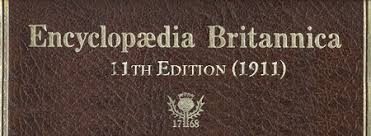 1111 Thistle  A gift from a thistle - Braveheart
_________________
E.T.A.E
|
|
|
|
Réponse |
Message 17 de 65 de ce thème |
|
[editar] Simbología cristiana
Para el cristianismo evangélico, el Arca significa la Presencia misma de Dios entre su pueblo. Los querubines simpre aparecen en la biblia como guardianes que cuidan lo que Yahveh les encomienda, una de esas prohibiciones es que el humano se acerque a Dios. Pero en el Arca se ve cómo los querubines están inclinados ante la tapa que contiene la sangre depositada por el sumo sacerdote; esto significa que cuando los querubines ven la sangre que cubre el Arca, se inclinan y permiten el paso a la Presencia de Dios, es decir, el cristiano que está cubierto simbólicamente por la sangre del sacrificio de Jesucristo, tiene libre acceso al Padre. También está presente igualmente como objeto sagrado en la religión de la Iglesia ortodoxa etíope; y para los cristianos católicos romanos se simboliza místicamente a través de la Virgen María. Para los cristianos existe un episodio especial durante la muerte de Jesús en la cruz del Calvario, cuando el enorme velo del templo se rasgó por la mitad. Su significado; El Lugar Santísimo estaría de ese momento en adelante, accesible para todo aquel que quisiese acercarse a la Presencia de Dios, la antigua alianza ya no tenía valor según la segunda carta a los corintios 3:14 puesto que Él,EL CORDERO SANTISIMO había derramado su sangre una vez y para siempre, y había hecho de los suyos sacerdotes de Dios.
[editar] Historia del Arca

David llevando el Arca a Jerusalén.
|
|
Existen desacuerdos sobre la exactitud de la información en este artículo o sección.
En la página de discusión puedes consultar el debate al respecto. |
La Biblia indica que el Arca fue mandada construir por Moisés y su diseño ordenado según Dios lo había dispuesto; fue usada en la conquista de Canaán y con ella Josué consiguió abrirse paso en las aguas del Jordán al contacto de éstas con el Arca, y durante siete días fue paseada en torno de Jericó, que cayó luego en poder de dicho caudillo.
El Arca fue fijada en Silo. Durante la época de Elí y Samuel, sucedió uno de los episodios más impresionantes del que se cuenta acerca del Arca de Dios. Durante una cruenta guerra contra los filisteos fue llevada al campamento israelita con el objeto de levantar la moral de los guerreros. Pero después de una trágica derrota del pueblo hebreo, donde también murieron los dos hijos del juez y sacerdote israelita Elí, los filisteos la tomaron como un valiosísimo trofeo, dando lugar a un verdadero luto en todo el país de Israel. En poder de aquellos estuvo unos meses, aconteciendo que desde el momento que fue llevada al templo de la gigantesca estatua del dios Dagón en Asdod, éste quedó dos noches consecutivas postrado delante del Arca, sólo que la segunda vez decapitado y sin las manos, a lo que siguió una ola de estragos, desastres y plagas azotando todo aquel país. Los filisteos, horrorizados por aquellos sucesos, habían dejado que el Arca fuese sola en un carro tirado por dos vacas. Después los animales pararon en Bethsames: varios habitantes de aquel lugar murieron por el trato poco reverente que dieron al objeto sagrado.
De allí fue trasladada a Gabaá. Luego Saúl la habría utilizado en la campaña contra los filisteos. Posteriormente David con un acompañamiento solemne la habría trasladado a Sión. Sin embargo, de camino a Sión había ocurrido un accidente: Uza, un encargado del Arca, quiso sostenerla en un momento de bamboleo y cayó muerto de repente. David atemorizado la dejó durante 3 meses en casa de Obededom. Seguidamente, desde Sión la reliquia fue instalada en el majestuoso templo de Salomón en tiempos de su reinado en Jerusalén.
Luego, desde que Nabucodonosor, rey de Babilonia, invadió Jerusalén, destruyendo el templo y saqueando todos los objetos valiosos del mismo, el Arca previsoriamente fue llevada y colocada en un lugar seguro y secreto antes de la invasión y posterior deportación de los judíos. Precisamente -en ese tiempo de la destrucción del Templo- Jeremías es el profeta ungido responsable de hablar. Según el registro de los Macabeos, Jeremías tomó el Arca -lo cual representaba el trono de Dios- para ocultarla en el Monte Nebo:
Leamos en 2 Macabeos 2:4-8 (este libro solo aparece en la biblia con el canon alejandrino)
"El profeta, después de una revelación, mandó llevar consigo la Tienda y el Arca; y cómo salió hacia el monte donde Moisés había subido para contemplar la heredad de Dios. Y cuando llegó Jeremías, encontró una estancia en forma de cueva; allí metió la Tienda, el Arca y el altar del incienso, y tapó la entrada. Volvieron algunos de sus acompañantes para marcar el camino, pero no pudieron encontrarlo. En cuanto Jeremías lo supo, les reprendió diciéndoles: "Este lugar quedará desconocido hasta que Dios vuelva a reunir a su pueblo y le sea propicio. El Señor entonces mostrará todo esto; y aparecerá la gloria del Señor y la Nube, como se mostraba en tiempo de Moisés, cuando Salomón rogó que el Lugar fuera solemnemente consagrado".
Jeremías diría que esa Arca, el antiguo "trono de Dios", perdería importancia espiritual y sería sustituída por la presencia de Dios entre su pueblo:
"Y sucederá que en aquellos días... -declara el SEÑOR- no se dirá más: "Arca del pacto del SEÑOR"; no les vendrá a la mente ni la recordarán, no la echarán de menos ni será hecha de nuevo. En aquel tiempo llamarán a Jerusalén: "Trono del SEÑOR"; y todas las naciones acudirán a ella, a Jerusalén, a causa del nombre del SEÑOR; y no andarán más tras la terquedad de su malvado corazón." (Jeremías 3:16-17)
"Y el templo de Dios fue abierto en el cielo, y el arca de su pacto se veía en el templo. Y hubo relámpagos, voces, truenos, un terremoto y gran granizo." (Revelación/Apocalipsis 11:19)
[editar] Ubicación actual del Arca
Actualmente existen diversas teorías sobre la ubicación actual del Arca de la Alianza. Entre ellas destacan las tres más conocidas, las cuales se citan a continuación:
[editar] Oculta en el Monte Nebo
El Libro II de los Macabeos, cap. 2, ver. 4-10), contiene referencia de unos escritos que mencionan que el profeta Jeremías siendo advertido por Hashem(Di-s)" antes de la invasión babilónica, movió el Arca desde el Templo, y la hizo enterrar en una cueva del Monte Nebo.
En este sentido, cabe mencionar que, a partir de esta ubicación, existen numerosas teorías o historias "no probadas" y sin fundamento serio, que postulan que posiblemente habría sido encontrada e incluso posiblemente llevada a algún otro lugar, el cual depende de la versión de cada teoría o historia.
La tribu africana Lemba, la cual presume de ascendencia israelita,[cita requerida] ha afirmado en sus tradiciones que sus antepasados, cuando llegaron al sur de África, trajeron consigo una reliquia sagrada llamada Ngoma lungundu o "la voz de Dios", la cual estuvo un tiempo escondida en una cueva profunda en las montañas Dumghe, su hogar espiritual hasta que fue llevada a un museo, donde se encuentra actualmente.[1] [2] [3]
A partir de ello, el investigador Tudor Parfitt, que tiene un enfoque literalista de la historia bíblica, postula en su investigación que el Ngoma lungundu está relacionada con el Arca. Su hipótesis se basa en que el objeto descrito por el pueblo Lemba posee atributos similares al Arca, tales como que el Ngoma lungundu es de tamaño parecido, que fue trasladado sólo por los sacerdotes, que no se le permitió tocar el suelo, que fue venerado como una voz de su Dios, o que se utilizó como un arma de gran poder.
Parfitt analizó este artefacto con radio-carbono, datándolo en una fecha aproximada al año 1350, lo que coincidió con el repentino final de la Gran Zimbabue.[4] Parfitt sugiere que la Ngoma lungundu que se encontró, es la descendiente de la Bíblica Arca, y que ésta fue reconstruida a través de la historia. Parfitt ofrece la sugerencia de que el Arca bíblica, al igual que la Ngoma lungundu, era una estructura de madera cubierta con un pedazo de cuero, y que siempre ha sido un tambor, así como un arma de algún tipo, al igual que el Ngoma. Sin embargo, esta última hipótesis es rechazada por otros arqueólogos e historiadores, al no poder ser probada.
[editar] Guardada en una iglesia de Etiopía
En 1989, un periodista británico, Graham Hancock, aseguró que la legendaria Arca Perdida no se encontraba perdida sino a salvo en un templo de Etiopía. Posteriormente han aparecido pruebas arqueológicas que han sustentado esta teoría. Esta teoría se basa en relatos pertenecientes a la iglesia cristiana Copta en Etiopía, que indican que el Arca de la Alianza habría sido trasladada secretamente hacía más de 1000 años. (650 a.c.).

Modelo 3d del arca de la Alianza. basado en el boceto del Dr. J.O. Kinnaman.

Detalle de la guirnalda que adorna la tapa.
Cuenta el libro sagrado de Etiopía, el Kebra Nagast, que en tiempos de Salomón, la Reina de Saba visitó Jerusalén atraída por la sabiduría de su Rey. La Reina de Saba comenzó a ejercer una irresistible atracción sobre el hijo de David, quien pese a sus riquezas e inteligencia no lograba seducir a la bella soberana. Llegaba la hora de su partida a Saba y Salomón consiguió arrancarle una promesa: que en el caso de que se llevase consigo algún bien preciado del reino, consentiría a cambio yacer con él una sola noche. La víspera del viaje, Salomón ofreció a su invitada una cena de exquisitos manjares. Astutamente ordenó que se sazonaran con abundante sal y picantes especias. Tras los postres, la reina tuvo que beber abundante agua para calmar la sed. ¡Qué bien es el más preciado sino el agua! Rota la promesa, la reina de Saba cumplió y de aquella única unión nació Menelik I, futuro rey de Etiopía. Relatos indican que años más tarde el joven Menelik fue enviado para recibir educación a casa de su padre en Jerusalén. Pocos años después, a pesar de los esfuerzos de Salomón para que su hijo se quedara, Menelik regresó a Etiopía. La tradición cuenta que, seducido por sus ayudantes, se llevó consigo el Arca (algunas teorías postulan que para poder llevarse el arca existió un posible cambio del arca original por el de una copia del arca que Menelik debía llevarse; siendo posiblemente que esa copia sea el arca que se dice fue ocultada en Jordania; otras teorías, en cambio, postulan la posible existencia de dos arcas originales o que tenían la misma importancia, en donde en cada una se guardó posiblemente una de las Tablas de la Ley, siendo una de ellas la que fue llevada a Etiopía).
Posteriormente los relatos indican que permaneció primeramente en un templo en la isla de Elefantina cerca del río Nilo. Luego se relata cómo el Arca de la Alianza habría sido colocada en una especie de tabernáculo en la isla de Tana Cherkos (Tana Kirkos), ubicada en el lago Tana (lago Tano), donde permaneció durante 800 años.
Los relatos señalan que pasado estos 800 años, el rey Ezana de Etiopía decidió trasladar el arca a Axum, siendo finalmente guardada en la Iglesia de Nuestra Señora de Sion. Según los etíopes, es el lugar en donde hasta hoy en día aún permanece y es cuidada por un sacerdote. Este sacerdote, según sus tradiciones, sería un descendiente de uno de los levitas, quienes ayudaban a trasladar y cuidar el Arca en sus viajes. Este sacerdote es la única persona a quien se le permite ver el Arca de la Alianza guardada en la iglesia de Nuestra Señora de Sion, al igual que ocurría con los levitas según la tradición judía; es por ello que no se ha podido ratificar su permanencia real en esta iglesia, aunque todas las pruebas arqueológicas indicarían que esta teoría sería auténtica.[cita requerida] Entre las variadas pruebas arqueológicas, hay reliquias pertenecientes al pueblo judío de la época del arca, y que pertenecerían al templo de Jerusalén.[cita requerida]
Esta última teoría además se sustenta en que extrañamente el Arca es el punto central del culto y la adoración cristiana en Etiopía: cada uno de los 20.000 templos de Etiopía contiene una réplica del Arca de la Alianza. El libro sagrado de Etiopía, el Kebra Nagast cuenta la historia del traslado del Arca, gracias a Menelik I. Cuando el Rey Salomón se dio cuenta del robo pensó en enviar un ejército a perseguir a su hijo, pero él también soñó que era la voluntad de Dios y mantuvo la desaparición del Arca en secreto. La versión respecto a Makeda y Salomón, en la tradición judío ortodoxa de la falasha de Etiopía, es prácticamente idéntica a la del Kebre Negest. A pesar de ser una historia desestimada por los historiadores occidentales, los etíopes la aceptan sin dudar. Están convencidos que el Arca original fue llevada a Axum en el primer milenio antes de Cristo y que permanece ahí desde entonces.
Recientemente, el Abuna de Etiopía (Iglesia ortodoxa etíope) afirma haber visto el Arca de la Alianza[5]
[editar] Escondida en el Pozo del Dinero en la Isla del Roble
Una teoría (de la que no hay muchas pruebas) asegura que después de la Tercera Cruzada, los Caballeros Templarios (lo más probable es que haya sido un grupo francés de esta orden) se la habrían llevado a Escocia, donde la familia noble Sinclair, los habría ayudado a llevarla a un lugar más alejado y por tanto más seguro. Este lugar sería una isla cerca de Nueva Escocia llamada Isla del Roble o Oak Island (en inglés). En esa isla se encuentra un pozo, apodado el pozo del dinero, famoso por la inaccesibilidad de su fondo (donde podrían encontrarse variadas cosas, desde los manuscritos originales de William Shakespeare, las joyas de María Antonieta, el Santo Grial, un tesoro de Barbanegra o, como plantea esta teoría, el Arca de la Alianza) y el misterio que lo rodea, ya que nadie sabe con certeza quién lo construyó o cuándo, aunque se propone que fueron integrantes de la flota naval francesa, cosa que sería viable dada la gran influencia templaria en esa zona (siendo una de las principales pruebas, que el último caballero templario de la historia Jacques de Molay , fuera francés). |
|
|
|
Réponse |
Message 18 de 65 de ce thème |
|
Haz hecho público que te gusta. Deshacer
Haz hecho público que te gusta. Deshacer
irisenriquez.wordpress.com/2013/01/10/piedra-del-destino/En caché
Haz hecho público que te gusta. Deshacer
misviajesporahi.es/.../och-cosas-que-quiza-no-sabias-sobre-escocia.ht...En caché
Haz hecho público que te gusta. Deshacer
Haz hecho público que te gusta. Deshacer
botasdeflores.blogspot.com/.../el-robo-de-la-piedra-del-destino.htmlEn caché
Haz hecho público que te gusta. Deshacer
|
|
|
|
Réponse |
Message 19 de 65 de ce thème |
|
miércoles, 9 de enero de 2008
La Piedra del Destino y las Joyas de la Corona
 En la actualidad, estos dos tesoros se muestran en una sala del Castillo de Edimburgo.   (La Piedra del Destino y las joyas de la Corona) La Piedra del Destino, es un bloque de piedra arenisca, que era utilizado en la Edad Media para las coronaciones de los reyes escoceses, y se colocaba debajo del trono de cada rey en dichas ceremonias. El lugar de las coronaciones y donde permanecía esta piedra era en la Abadía de Scone (cercanías de Perth) desde el siglo XII. En la actualidad no queda rastro de esta edificación, pero en ese mismo lugar ahora se encuentra el Palacio de Scone 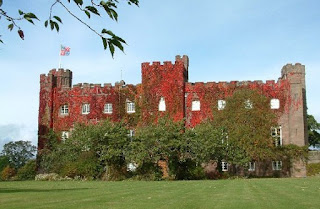 Pero en el año 1296 Eduardo I de Inglaterra se hace con la Piedra del Destino, dejándola en la Abadía de Westminster, y usándose en todas las coronaciones de los siguientes reyes ingleses, y siendo testigo de la última coronación, la de Isabel II en 1953. Pero en 1996, es decir 700 años después, el Gobierno accedió a entregarle a los escoceses dicha piedra en el Castillo de Edimburgo, con la condición de que se pueda llevar de vuelta a Londres en las siguientes coronaciones. Las joyas de la Corona escocesa incluyen la corona, la espada del estado y el cetro y son las joyas reales más antiguas de la cristiandad. La corona de Escocia está hecha de oro y decorada con diamantes, amatistas y granates. 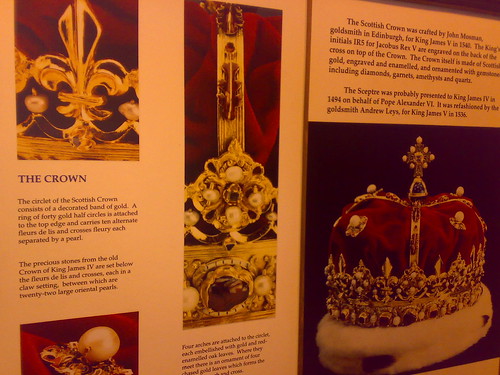 El cetro es de plata dorada y está rematado con una esfera de cristal de roca. 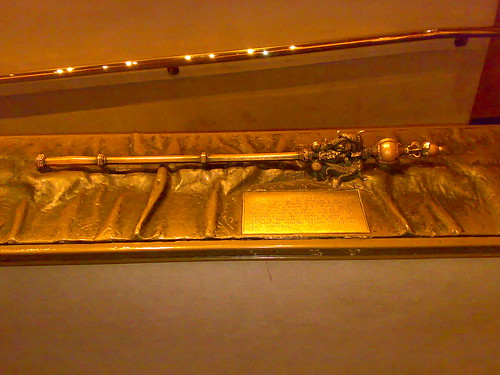 (Simil del cetro que hay en otra sala del castillo) La espada del estado, la vaina y el cinto están decorados con las armas del Papa Julio II  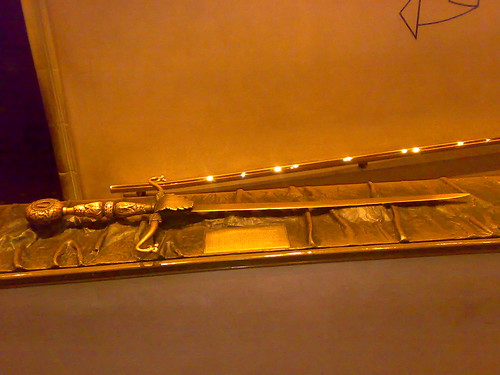 (Otro simil) Agradecimientos: scotlandinargentina.com.ar celtiberia.net English Wikipedia
|
|
|
|
Réponse |
Message 20 de 65 de ce thème |
|
Es el 30 de noviembre de 1996. Más de doce mil personas se arremolinan junto al castillo de Edimburgo para ver a una comitiva formada por altos dignatarios políticos y religiosos. Las tropas militares que los acompañan parecen escoltar un curioso tesoro. Se retira la enseña de San Patricio (la bandera nacional escocesa) y se iza la bandera inglesa, con motivo de la entrada del príncipe Andrés, que representa a la reina Isabel II. Luego tiene lugar una breve ceremonia en la que el reverendo escocés John MacIndoe acepta formalmente el tesoro de manos de Michael Forsyth, secretario británico para la nación escocesa.
En contra de lo que pudiera parecer a simple vista, observando el enorme despliegue de seguridad y los relevantes personajes presentes en la ceremonia, el tesoro no consiste en valiosas joyas ni en objetos de oro o cosa por el estilo, no! Se trata, simplemente, de una antigua piedra. Pero su valor supera con creces al del más fabuloso botín con que pudiera soñar un emperador. Es una piedra perteneciente a la realeza escocesa y recibe diversos nombres. La Piedra del Destino, la Almohada de Jacob, Lia-Fail, la Piedra de Scone, etc.
Fue robada por los ingleses en 1246 y utilizada durante casi siete siglos en sus ceremonias de coronación real, pese a las airadas peticiones de los escoceses, que clamaban por su devolución. Hasta hace poco se encontraba en la capilla de San Andrés, bajo la silla del trono inglés, en la abadía de Westminster (Londres). La importancia de la Piedra reside en una leyenda que asegura el poder divino, o casi mágico de quien la posee. Pero ¿de dónde procede este enigmático símbolo mágico?
EL SUEÑO DE JACOB
En la Biblia (Génesis 28,10-15) encontramos la primera pista: «Jacob se dirigía a Haran. Llegado a cierto lugar, pasó allí la noche. Ytomando una de las piedras del lugar, se la puso por cabezal y se acostó en aquel sitio. Y tuvo un sueño: vio Jacob una escalera que se apoyaba en la tierra y cuya cima tocaba el cielo; y los ángeles de Dios subían y bajaban por ella. Sobre ella estaba Yahvé, que le dijo a Jacob: Yo soy Yavhé, el Dios de tu padre Abraham. La tierra en la que estás acostado te la daré a ti y a tu descendencia; ésta será como el polvo de la tierra, te extenderás hacia el Oriente y el Occidente y en ti y en tu descendencia serán benditas todas las tribus de la Tierra. Cuando Jacob despertó, tomó la piedra y la erigió en un monumento.... Llamó a aquel lugar Betel (Ciudad de la Luz).
Posteriormente, Jacob y los suyos marcharon a Egipto, donde cedieron la Piedra a José. En 1453 a. de C., se produjo el Exodo desde el Valle del Nilo hacia la Tierra Prometida bajo la dirección de Moisés, quien llevó consigo la Piedra y otros tesoros. Durante la travesía del desierto, la extraña roca dio muestras de sus propiedades mágicas cuando, tras golpearla Moisés con un bastón, brotó agua de su interior. Años después, el misterioso símbolo pétreo llegó a Canaán, donde durante 800 años fue utilizado para la coronación de los reyes de Israel. También sirvió de pedestal para el Arca de la Alianza, que se encontraba en el Templo de Salomón, en Jerusalén.
En el año 602 a.C., el monarca babilonio Nabuconodosor invadió Jerusalén, profanó el templo y mató a Zedekías, rey de Israel. El profeta Jeremías, que era descendiente directo de Jacob, tomó a las dos hijas de Zedekías y algunos tesoros del templo, incluida la Piedra del Destino, y huyó a Egipto. Desde allí comenzó Jeremías su peregrinar a través del Mediterráneo, llevando consigo la Piedra y a toda su gente. Las tradiciones de Irlanda aluden a la llegada a sus tierras de un monje llamado Eremhon, que podría ser Jeremías, y de un personaje llamado Breagh, tal vez Simón Brec, que lideraban la expedición que transportaba la Piedra, la cual fue bautizada con el nombre de Lia-Fail (Piedra que habla). Desde entonces, los reyes irlandeses fueron coronados sobre la mágica roca en la colina de Tara.
La dinastía de reyes irlandeses continuó durante más de 1040 años hasta que Fergus, se llevó la Piedra del Destino a Escocia en el año 498 d.C., autoproclamándose primer rey de ese país. Desde entonces la Piedra estuvo en la abadía de Scone (Perthshire) y allí fueron coronados los reyes escoceses durante más de 700 años. En 1292 se utilizó la Piedra del Destino por última vez, pues cuatro años después fue robada por Eduardo I de Inglaterra, quien la trasladó a la abadía de Westminster. Desde entonces, permaneció bajo la silla de coronación real inglesa.
UTILIZADA DESDE TIEMPOS REMOTOS
La Piedra del Destino está hecha de arenisca amarilla, pesa unas 310 libras (152 kilos) y tiene una cruz latina grabada recientemente, además de unas marcas esculpidas con cincel en una cara. En su parte superior hay una ancha grieta, originada sin duda por el método usado para transportarla y que consistía en unas varas de madera que pasaban por los anillos de hierro que sobresalen de cada extremo de la roca. Respecto a la importancia que la familia real inglesa otorga a esta Piedra, es bien sabido que, cuando la Luftwaffe alemana bombardó Londres durante la II Guerra Mundial, se estableció un plan de emergencia para asegurar la reliquia. De su custodia se encargó un grupo secreto de diez hombres dirigidos por el Primer Ministro.... Ni siquiera para proteger las joyas de la Corona se había organizado un proyecto de esta envergadura.
El profesor Harold Totten, catedrático de Ciencias de la Universidad de Yale, ha concluido que la razón por la que este objeto es fundamental en la monarquía escocesa, más que por la tradición que habla del sueño de Jacob, es porque los reyes están convencidos que la Enigmática y Misteriosa Piedra del Destino, posee poderes mágicos que a los soberanos les da sabiduría, riqueza y salud!....
http://www.elaviso.com/enigmas-y-misterios/495-el-enigma-de-la-pied.html |
|
|
 Premier Premier
 Précédent
6 a 20 de 65
Suivant Précédent
6 a 20 de 65
Suivant Dernier
Dernier
|









 This encounter with destiny, was to leave an everlasting impression on William Sinclair. Sir William, the chapel builder, is also the direct ancestor of the First Grand Master Mason of Scotland, also named William St Clair (Sinclair) who had a exulting sense of pride when he inherited the title. An akashic oracular time machine centred on the Sun and the Moon would be built to house the ancient library of knowledge. A modern day Solomon's Temple (itself an anagram of Sol-Sun & Mon-Moon). The source of Modern Freemasonry was to leave some figurative allegories to symbolise deeper moral truths, or spiritual meanings. Bloodlines and the inseparable D.N.A. coil symbol that today is considered conventional to portray the blood-group message, was ascribed by Sir William to pay attention in chapter 13 verse 13 to the knowledge and secrets of the 13th disciple.... Matthew's words,......
This encounter with destiny, was to leave an everlasting impression on William Sinclair. Sir William, the chapel builder, is also the direct ancestor of the First Grand Master Mason of Scotland, also named William St Clair (Sinclair) who had a exulting sense of pride when he inherited the title. An akashic oracular time machine centred on the Sun and the Moon would be built to house the ancient library of knowledge. A modern day Solomon's Temple (itself an anagram of Sol-Sun & Mon-Moon). The source of Modern Freemasonry was to leave some figurative allegories to symbolise deeper moral truths, or spiritual meanings. Bloodlines and the inseparable D.N.A. coil symbol that today is considered conventional to portray the blood-group message, was ascribed by Sir William to pay attention in chapter 13 verse 13 to the knowledge and secrets of the 13th disciple.... Matthew's words,......






























The blade and chalice guarding o'er her gates.
Adorned in masters' loving art, she lies.
She rests at last beneath the starry skys.